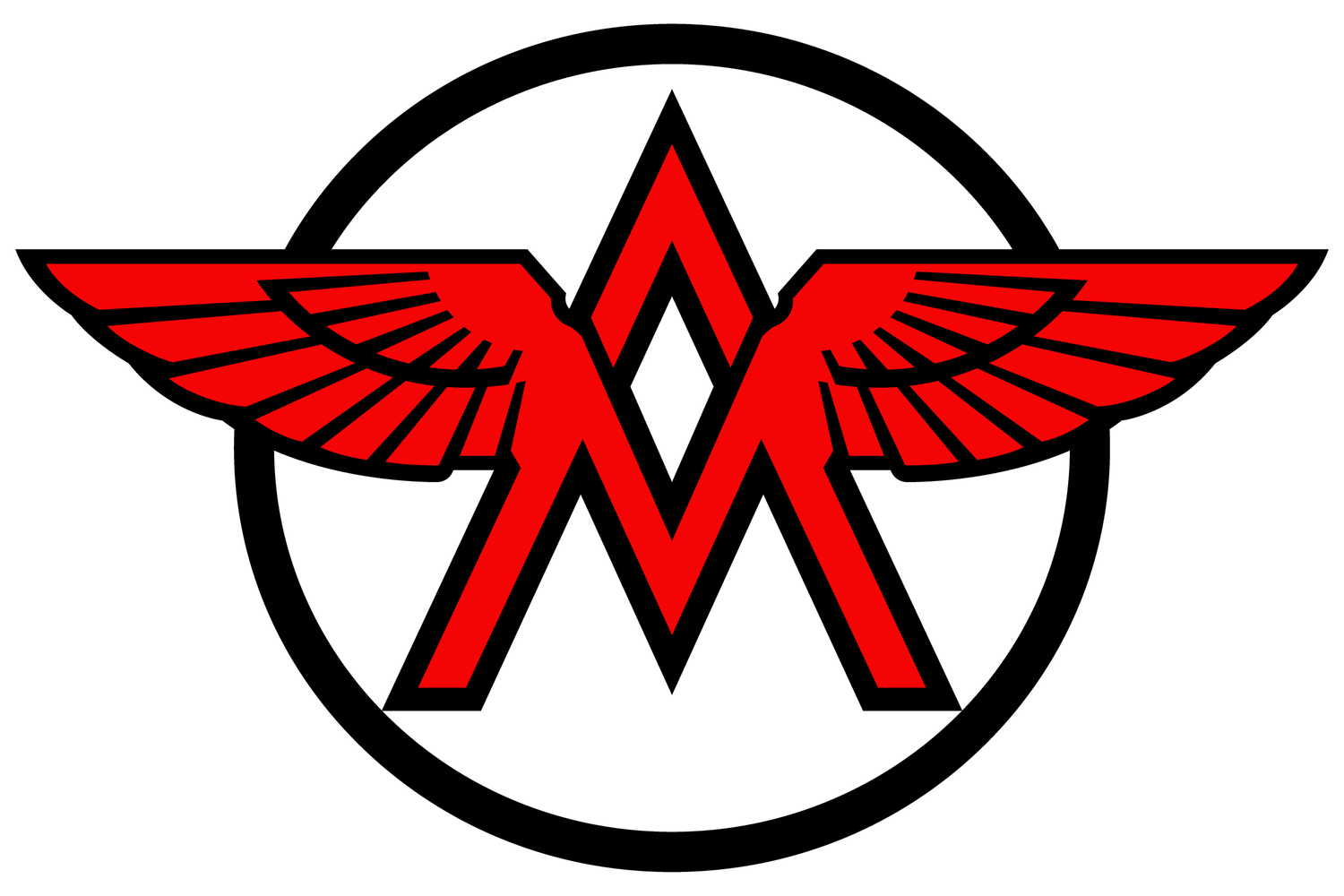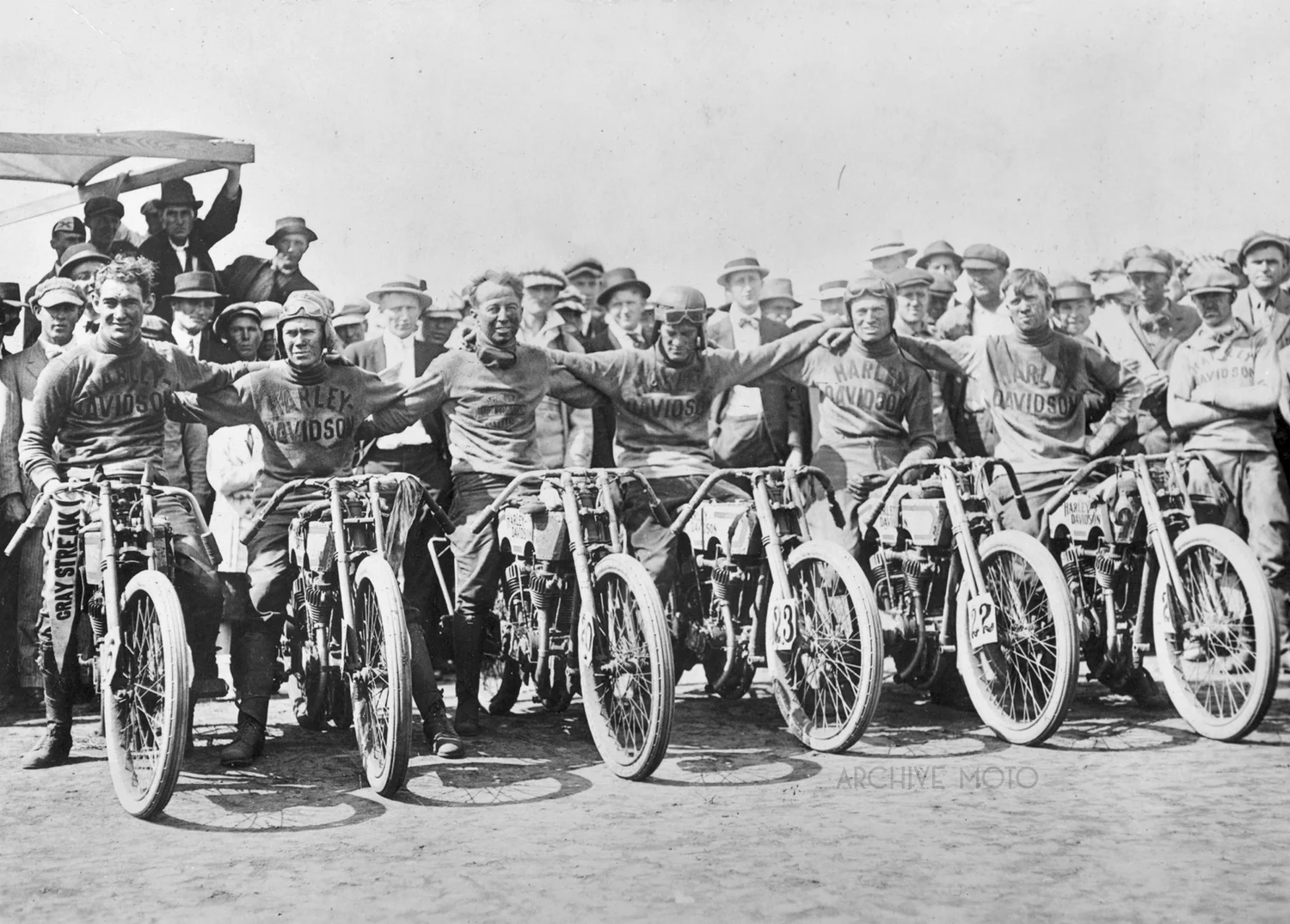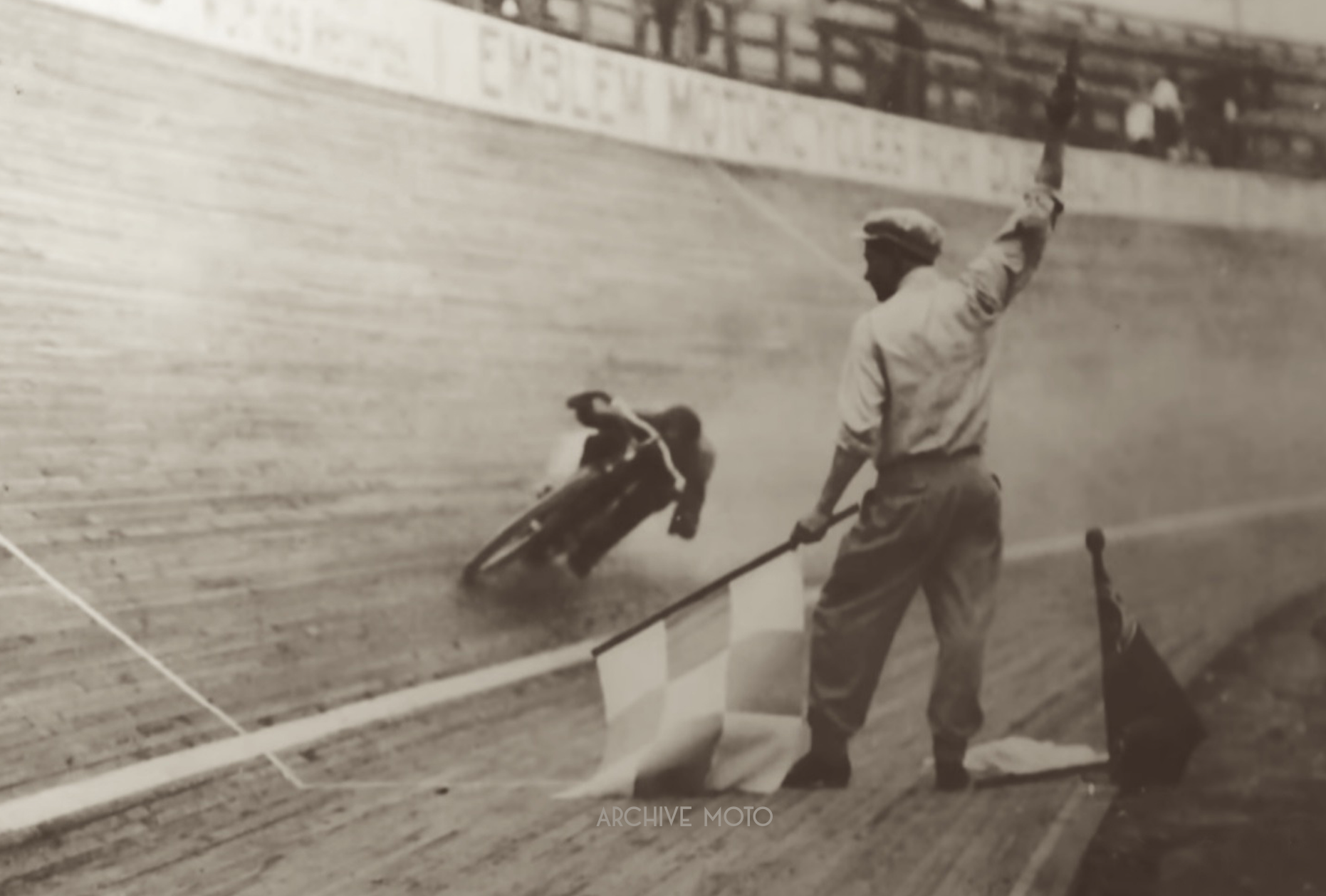Attrition. One of the major issues concerning the population of capable professional racers which weighed heavy on the era of the motordrome, one of America’s favorite motorsports in the early teens. Having exploded in popularity since its introduction in 1909, by 1913 the dangerous sport of board track motordrome racing was hitting its peak, with around 18 tracks operating around the country and another 9 or so to come in the next 2 years. Thrilling, dangerous, controversial, and lucrative, the sport of board track racing had never been as popular as it was in 1913. The peril’s of the sport though had already claimed the life of a dozen racers, killing a nearly equal number of spectators, and injuring or maiming dozens, and dozens more. Despite the risk, or perhaps as a result of it, the fans still filled the bleachers atop the treacherous saucers leaving promoters constantly searching for new competitors.
Despite the common narrative that Harley-Davidson was a top level contender on the boards of America’s infamous motordromes, the truth the matter is quite a different story. In fact, the legendary Milwaukee motorcycle manufacturer didn’t make their official professional racing debut until the short circular wooden coliseums were all but gone.
From the earliest days, the motorcycle industry in America realized the profitable potential between aligning their products with the sporting young gentlemen who slung themselves around the race tracks. No doubt a philosophy carried over from the good ole’ days of bicycle competition, advertisements which initially touted the brand’s superior technology quickly began to backupsuch claims with their successes at speed trails, reliability runs, road races, and hill climbs. Indian Motocycles, one of the first manufacturers to realize the lucrative relationship between competition success and showroom sales was also one of the first to capitalize on their victories, running ads like Indian’s 1904 “Scalps” campaign which trumpeted their titles back to 1902.
On March 26, 1903, as witnessed by an inaugural crowd of 3,000 Gilded Age elites, the first official races were staged in front of the Ormond Hotel, on the north end of Daytona Beach, Florida. In-between the dunes and the Atlantic, where the hard-packed sand seemingly stretched out to the horizon, three automobiles and a lone motorcycle made record runs for the first time, establishing a long lasting American love affair between speed demons and the beach. The single motorcycle entrant, a young Swedish immigrant named Carl Oscar Hedstrom, a former cycle racer and aspiring engineer, had already established his place in American motorcycle history as one of the cofounders of the Hendee Manufacturing Company, makers of the legendary Indian motorcycle.





